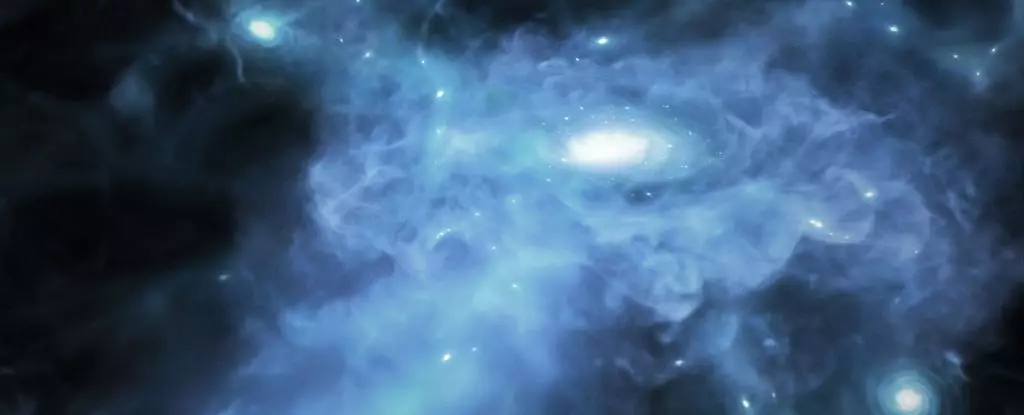Exploring the early Universe, scientists have recently made a groundbreaking discovery in the turbulent era known as the Cosmic Dawn. With observations from the James Webb Space Telescope (JWST), researchers have identified the formation processes of some of the Universe’s earliest galaxies, dating back to around 13.3 to 13.4 billion years ago. This period occurred just a few hundred million years after the Big Bang, offering a glimpse into the very birth of galaxies.
Led by astrophysicist Kasper Elm Heintz from the Niels Bohr Institute in Denmark, the research team has uncovered telltale signs of gas reservoirs actively being slurped into three newly forming and growing galaxies. These observations mark a significant milestone in our understanding of galaxy formation, with Heintz noting that these are the first ‘direct’ images of galaxy formation that have ever been seen. The research goes beyond previous JWST observations, diving deeper into the construction of the first star systems in the Universe during the Cosmic Dawn.
The Cosmic Dawn, a period shrouded in mystery, occurred in the first billion years after the Big Bang. This era was characterized by the neutral hydrogen fog that pervaded the Universe, hindering the propagation of light. The JWST was specifically designed to penetrate this fog using its powerful infrared eye, which can traverse the cosmos more effectively than other wavelengths. The goal was to understand how the Universe evolved from a hot primordial plasma soup to the birth of the first stars and galaxies, ultimately paving the way for the Universe as we know it today.
Through JWST observations, Heintz and his team detected a signal emanating from three galaxies, revealing their presence around 400 to 600 million years after the Big Bang. These galaxies served as sparkling islands in a sea of neutral, opaque gas, shedding light on the active formation of galactic material. The researchers were able to distinguish the gas reservoirs around the galaxies from the intergalactic neutral gas, highlighting the significant role of these reservoirs in the early stages of galaxy formation. The abundance of gas indicated that the galaxies had yet to form most of their stars at the time of observation, offering a glimpse into the initial stages of star and galaxy formation.
While the discovery of these early galaxies represents a step forward in our understanding of the Universe’s formation processes, many questions still remain unanswered. The Cosmic Dawn continues to hold numerous secrets waiting to be unraveled, with neutral hydrogen concealing untold mysteries. However, the identification of these galaxies provides researchers with a valuable opportunity to delve deeper into the galaxy formation process, paving the way for further discoveries. As astronomer Gabriel Brammer aptly puts it, these observations contribute to unraveling the question of where we come from, shedding light on the creation of some of the Universe’s first structures.
The recent breakthrough in observing the formation processes of the Universe’s earliest galaxies during the Cosmic Dawn represents a significant advancement in our exploration of galactic evolution. By unraveling the mysteries of this turbulent era, scientists are opening doors to a deeper understanding of the origins of the Universe and our place within it.


Leave a Reply